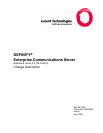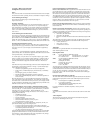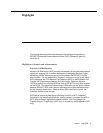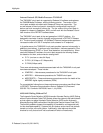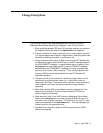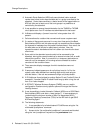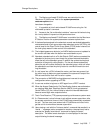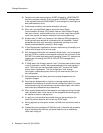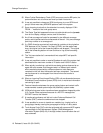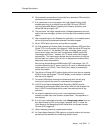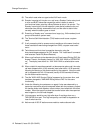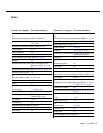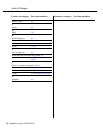
Change Descriptions
8 Release 8, Issue 3.0 (03.0.042.2)
30. Tandem trunk calls that received an ALERT followed by a DISCONNECT
that had a progress indicator IE did not send a CONNECT message back
to the orginator before the DISCONNECT, even though the incoming trunk
was administered to do so.
31. Under some conditions, call record exhaustion occurred.
32. When the Long Hold Recall feature was active and a Digital
Communications Protocol (DCP) station had the “Active Station Ringing”
field set to ‘silence’, and the station put a call on hold, when the long hold
recall timer expired, the station received a continuous audible ring.
33. Systems with a CLAN in an Expansion Port Network (EPN) occasionally
found that calls were denied for a theoretical lack of bandwidth. Socket
bandwidths are now more accurately represented, resulting in no more
denials unless bandwidth is actually in short supply.
34. If Path Replacement happened to remove a network loop, the display on a
station could change to just a trunk group.
35. With Centralized Voice Mail via Interswitch Mode Code, if an incoming call
from the PSTN to a station on the Legend covered to the voice mail on the
DEFINITY, the caller received the wrong greeting ("press *H"), because the
Legend was not sending the CPN IE in the SETUP message to the
DEFINITY.
36. If TN802 was in the Prologix cabinet in slot 7 and there was another board
in slot 5, there was a conflict alarm generated against the reserved slot in
slot 5. Slot 5 can now have any board when slot 7 contains the TN802,
and no alarm is generated. The "list configuration" and "change
circuit-pack" commands properly show only one reserved slot (slot 6) in
this configuration.
37. Calls answered via call pickup were not correctly dropped when the
originator dropped.
38. Users that put bridged calls on hold on a coverage module and then
attempted to conference or transfer the call could put the station in a state
that prevented using the conference or transfer buttons again until the set
was busied and released during maintenance.
39. When a party dialed itself and redirected to a coverage point that was also
itself, the switch reset. Now, the call will be dropped and the calling party
will receive re-order or intercept tone.
40. If a party on a call activated an autodial button to dial some digits, the
listen-only service observer did not hear the DTMF digits.
41. Moving agents from one split to another via CMS could cause the switch to
reset.
42. Occasionally, when making an IP SoftPhone call, if the caller did not send a
digit to the switch after off-hook, the switch kept the call up indefinitely,
rather than timing out.



